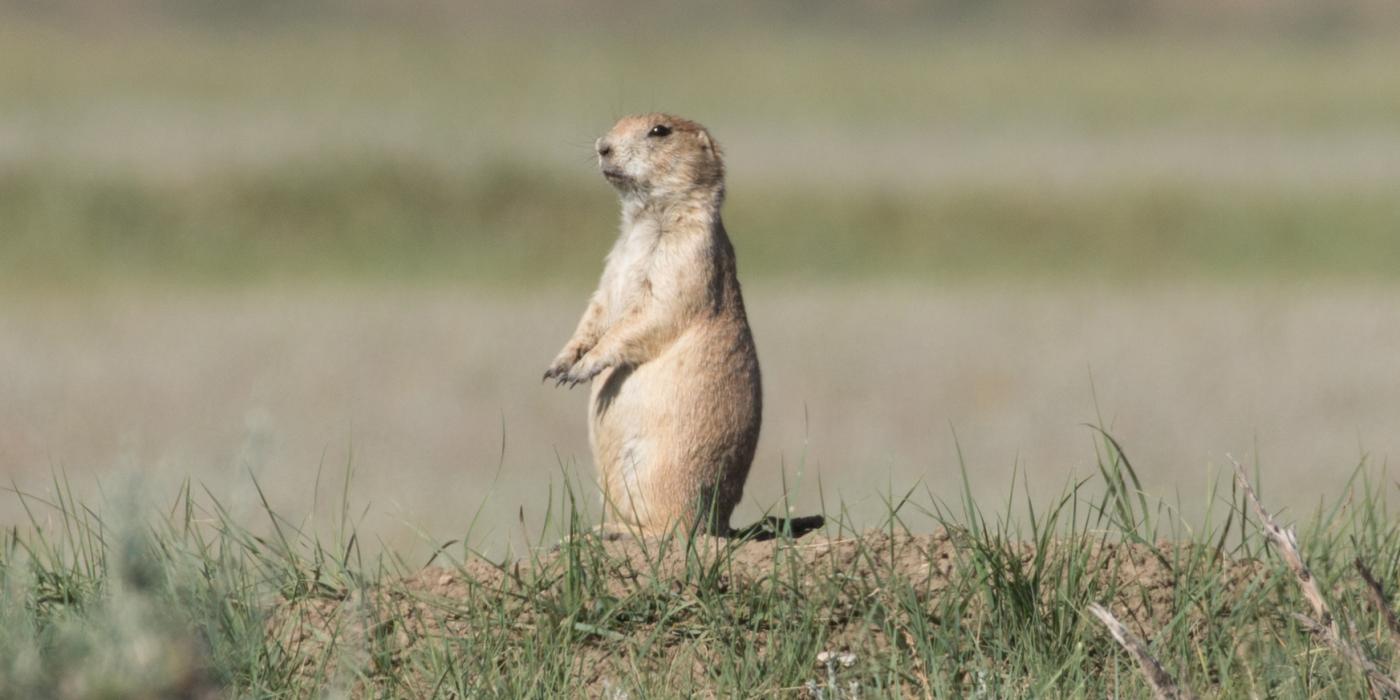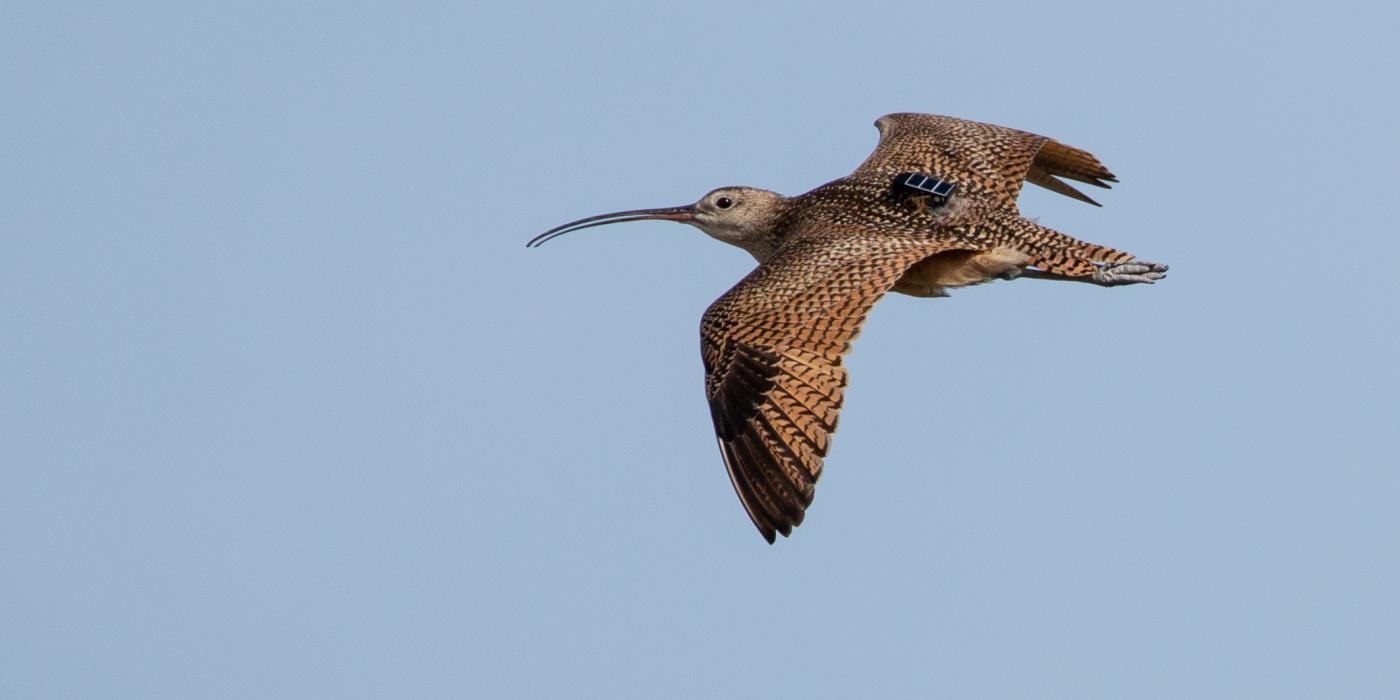Migrant Landbirds in the Andes

When we think about birds migrating to the tropics, we often focus on nearby areas such as Mexico and the Caribbean. However, each fall, millions of songbirds migrate from North America to their wintering areas in the northern Andes of South America.
Unfortunately, current human population trends and commercial exploitation have placed constantly increasing pressure on even the most mountainous ecosystems.
Although relatively few migrant species winter as far south as the Andes, this region is the exclusive wintering area for several migrants, including Cerulean and Canada warblers. It is also a primary wintering area for some of our most familiar migrants such as:
- Scarlet Tanagers,
- Blackburnian Warblers,
- Swainson's Thrushes,
- Olive-sided Flycatchers,
- and Western and Eastern wood-pewees.
This fact sheet will acquaint the reader with the area's conservation issues and discuss some of the natural history of migratory birds.
Deforestation: Bad News for Migrants
Within the northern Andes, distinctly different forest types and bird assemblages are found in each major elevation zone, with some species restricted to either the eastern or western slopes. Due to the steep slopes of the mountains, each elevation zone is composed of only a narrow band of land.
Consequently, many Andean species are concentrated in very small ranges. Relative to land area, deforestation rates of the Andes exceed those of the Amazon rainforests, and more species of birds are threatened with extinction. Deforestation, therefore, poses a great threat to the survival of migrants.
Clear-cutting of the forests meets the short-term economic needs of corporations and local subsistence farmers who clear land for dairy ranches and for coffee, coca, tea, and cacao plantations, as well as for non-sustainable, large-scale harvesting of commercially valuable trees.
Results of Historical Abuse
The conservation problem is not a new one. Extensive deforestation over the past 400 years or more has led to the elimination of many forest birds from vast regions, including much of the east Andean highlands of Colombia.
Likewise, most of the heavily populated Central Valley of Ecuador, originally cloud forest, has been converted to agriculture and cattle pasture over several centuries. Extensive areas are now degrading into dry wastelands due to soil erosion and the reduction in rainfall believed to be caused by deforestation.
Four northern Andean regions recently designated by the World Wildlife Fund as "Globally Outstanding for Biological Distinctiveness" have also been classified as critically threatened or endangered ecosystems.
Why Save the Andean Cloudforests?
Andean forests not only provide habitat for many migrants, they play a crucial role in the process of recycling water to provide rain for the agriculturally rich western lowlands.
The interruption of this process can have a devastating impact not only on the lowland rainforest birds, but also on the national economies that benefit from lowland cash crops. Protecting habitat for the migrants also protects economies that depend on a healthy environment.
Because the soil is fertile, rainfall is abundant, temperatures are mild, and insect-borne diseases are largely confined to the lowlands, the highlands of the Andes have historically maintained relatively large human populations compared to the Amazonian lowlands. By saving the forests, watersheds are protected, thereby preventing soil erosion, reducing flooding, and providing water and energy for people and crops.
Andean forests are among the most biologically diverse in the world. Creating adequate reserves may not only ensure the survival of hundreds of bird species, including migrants, but will also preserve countless plants and insects. These may have as yet unknown medicinal properties, that could provide cures for cancer and other benefits to human health and science.
Making a Living in the Clouds
When migratory birds arrive in the Andes' lush foothill and montane forests, they come into contact with hundreds of resident species.
- Many of the Andean birds congregate in large mixed-species flocks, which migrant Canada, Blackburnian, and Cerulean warblers join and so become part of this social system.
- Pewees and Alder Flycatchers do not join flocks but set up territories in patches of forest that they defend against members of their own species.
- Barn Swallows and Common Nighthawks forage over lakes, grasslands, and towns in the highlands in habitats similar to their summer homes.
Each migratory species has a slightly different twist to add to the story of tropical bird life. As more research is done, more interesting natural history is unveiled.
Summer Tanagers: Do Males Prefer Mountains?
Census data and field observations reflect an intriguing distinction between the winter distributions of Summer Tanager males and females. Nearly all Summer Tanagers seen in the highlands are bright red adult males.
In the Amazon lowlands, females predominate. This phenomenon has not been adequately studied to address the evolutionary causes. Interestingly, in their other wintering grounds in Central America, the sexes are found together in equal numbers, often in pairs.
Foothill Specialist
Cerulean Warblers need large tracts of forest on both their breeding and wintering grounds. During the northern winter, they are restricted to a narrow elevation zone between 600 and 1400 meters on the east slope of the northern Andes. It is one of the smallest elevational ranges of any species in the Andes and certainly of any Neotropical migratory bird.
Cerulean Warblers forage almost exclusively with large mixed-species flocks that depend on extensive forest tracts to sustain them. But, unlike their fellow migrant warblers, the Blackburnian and Canada, they join these flocks only singly or in pairs. This results in very low densities even in suitable forests.
Studies of its breeding population indicate a serious decline, probably due to the high rate of forest fragmentation at both ends of the migratory pathway. Saving the Cerulean Warbler not only requires saving large patches of forest in the midwestern U.S., but also saving adequate fragments of forest in the narrow band of Andean foothills, where many people clear-cut forests to live, grow crops, and raise cattle.
Canada Warblers vs. Tropical Tanagers?
In mixed-species flocks in mid-elevations, Canada Warblers often outnumber other species. Mixed-species flocks are usually comprised of pairs or small family groups which results in a high number of species represented in a relatively small flock. These flocks often contain species that feed in different parts of trees and use different foraging techniques. The wide range of lifestyles within one flock may allow for many species to coexist by reducing competition for prey.
One of the delights of the Andean foothills is the abundance of species of small tanagers which are among the most brilliantly colored birds in the world. They feed mostly on insects and fruit in the crowns of trees and are also often found in large mixed-species flocks.
When there are more than 8 small tanagers in a flock, Canada Warblers forage primarily in the understory and mid-canopies of trees. Yet, when there are fewer small tanagers, they often forage with them in the canopy. There may be competitive pressure from the tanagers to keep the Canada Warblers away from the potentially more productive canopy.
Migrants as Nomads
Scarlet Tanagers and Swainson's Thrushes feed on the abundant fruit found on many trees, vines, and shrubs. Scarlet Tanagers are found from the western reaches of the Amazon Basin to the upper foothills of the Andes.
However, they follow the different fruiting patterns of the forests, shifting from the Amazon lowlands to the hills in response to seasonal changes in fruit availability. They may even change their wanderings from one winter to the next. These birds may need continuous forest from the lowlands to the middle elevations in order to ensure a constant supply of fruit throughout their long stay.
Swainson's Thrushes range even farther up the mountains, to the upper reaches of the high cloud forests above 9000 feet. They, too, are often found in nomadic flocks, foraging on fruit-laden trees. They even roost at night in flocks. Perhaps by sticking together, individuals can better locate fruiting trees or perhaps groups can swamp aggressive species attempting to defend such trees.
Blackburnian Warblers Don't Hide
In middle to high elevations, Blackburnian Warblers often flock with small warbler-like resident birds such as Cinereous Conebills and White-tailed Tyrannulets. But they also frequent large mixed-species flocks, where they are by far the most common species.
Many of the birds in these flocks have evolved activity patterns and foraging maneuvers that keep them hidden from predators. Searching through these flocks, one finds that nearly all of the easily seen individuals are Blackburnian Warblers. They may not have evolved the cryptic behaviors because these may greatly reduce foraging efficiency since the warblers feed on small arthropods on exposed surfaces.
Is Help on the Way?
The establishment of large national parks and preserves must coincide with the enforcement of the laws and management plans that provide them strict protection. Park boundaries must be recognized by all sectors of each government in order to eliminate conflicting land-use plans.
Equally important is the involvement of local communities in sustainable activities. Also, such simple efforts as employing well-paid park guards can go a long way toward meaningful park protection.
Efforts by the private sector are beginning to make a positive impact. Private reserves are emerging to develop the burgeoning ecotourism industry. Research into sustainable forestry is underway, and pharmaceutical companies are beginning to set aside reserves to protect plants and insects.
Some forests that protect watersheds for water supplies and for small-scale hydroelectric projects preserve streamside corridors that may allow altitudinal migrants to move up and down slopes.
In addition, efforts are being made to reverse the trend of reforesting denuded slopes with non-native species such as pines and Eucalyptus by planting native trees. Most Andean birds avoid forests of non-native trees which are nothing more than biological deserts.
Some of the new reforestation efforts focus on restoring native shade trees to the sun coffee plantations that now blanket vast regions. A widespread re-conversion of sun to shade coffee plantations may be one of the forest birds' best bets for survival.
Further Reading:
- Fjeldsa, J. and N. Krabbe. Birds of the High Andes. Univ. Copenhagen and Apollo Press. Copenhagen. 1990.
- Robbins, C., J. Fitzpatrick, and P. Hamel. A Warbler in Trouble: Dendroica cerulea. Pages 549-562 in J. Hagan III and D. Johnston eds. Ecology and Conservation of Neotropical Migrant Landbirds. Smithsonian Institution Press. Washington, DC. 1992.
- Robinson, S.K., J.W. Fitzpatrick, and J. Terborgh. Distribution and habitat use of Neotropical migrant landbirds in the Amazon Basin and Andes. Bird Conservation International 5:305-323. 1995.



